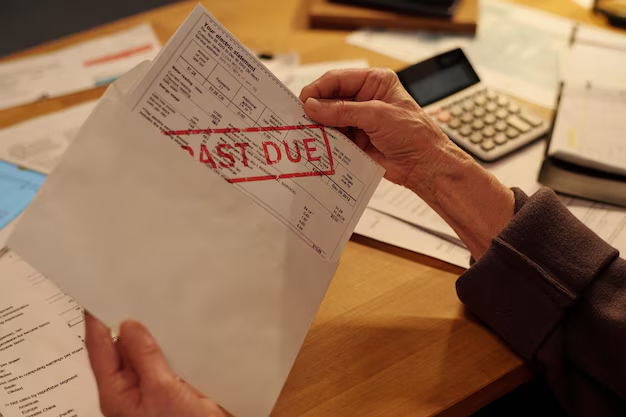Understanding the Possibility of Having Three VA Loans at Once: A Comprehensive Guide
Veterans looking to buy homes using the VA loan program often wonder about their borrowing options through this beneficial service. One of the most common questions is, "Can I have three VA loans at the same time?" Navigating the complexities of VA loans can be challenging, but it's essential to understand the opportunities available to make educated financial decisions.
Exploring VA Loan Basics
VA loans are mortgage loans offered to veterans, active-duty service members, and qualifying military spouses. These loans have several benefits including no down payment, lower interest rates, and no private mortgage insurance requirements. Understanding the eligibility criteria and limits is crucial before diving into how multiple loans work.
Eligibility for a VA Loan
To qualify, one typically must meet specific service length requirements and have a valid Certificate of Eligibility (COE). Credit and income are also considered, but they tend to be more lenient compared to conventional loans.
VA Loan Entitlement
A key concept in understanding multiple VA loans is entitlement. VA entitlement refers to the amount the Department of Veterans Affairs promises to repay a lender if the borrower defaults. There are two types of entitlements: basic entitlement and bonus entitlement. Both play a pivotal role in determining whether a veteran can have multiple VA loans.
Can You Have Multiple VA Loans?
The short answer is yes, it is possible to have more than one VA loan at the same time, but certain conditions must be met. Here’s how it works:
Understanding Entitlement Usage
Primary and Bonus Entitlements: Veterans can utilize their full entitlement for their first VA loan. If they haven't used the entire amount, remaining entitlement might be applied to a subsequent loan.
Remaining Entitlement: If a veteran decides to keep a current residence financed by a VA loan and purchase another property elsewhere, they can use remaining entitlement. This often comes into play when relocating to a different area for work or personal reasons.
Examples of Multiple VA Loans
- Relocating: A veteran's existing home has a VA mortgage, and they need to relocate for service or job change. They could potentially tap into remaining entitlement to finance a home in the new location.
- Investment: Use remaining entitlement to buy another property intended for investment purposes, though VA loans typically require the borrower to occupy the residence.
How Many VA Loans Can You Have?
Technically, more than one, although rarely would circumstances allow for three unless the veteran has significant remaining entitlement. Here’s a deeper look:
Financial Viability
Lenders assess financial stability, as taking on multiple mortgages demands substantial financial security. Veterans must comfortably meet debt-to-income ratios to ensure all loan obligations are met without financial strain.
Loan Limits & Remaining Entitlements
The total available entitlement can be split over multiple properties within jurisdictional lending limits. Veterans must keep in mind that staying within regional loan limits is vital to avoid needing a down payment on a second or third VA loan.
Maximizing VA Loan Benefits
To make the most out of VA loans and possibly hold more than one, it’s vital to:
- Evaluate Financial Stability: Ensure all current financial obligations are comfortably met.
- Consult with Lenders: Gain insights from lenders who specialize in VA loans to understand your entitlement status and potential options.
- Monitor Regional Loan Limits: Stay informed about how regional loan limits affect your entitlement usage.
Challenges and Considerations
While leveraging VA loans for multiple properties can be advantageous, it's crucial to understand:
- Occupancy Requirements: VA loans necessitate the borrower to occupy the dwelling as a primary residence.
- Market Conditions: Real estate market fluctuations may impact the ability to re-sell or refinance properties.
- Property Purpose: While VA loans are primarily for primary residences, some conditional uses exist, such as Parent Occupied Residences.
Practical Steps to Consider
For veterans contemplating multiple loans:
- Review Your COE: Ensure your Certificate of Eligibility reflects accurate entitlement status.
- Analyze Debt-to-Income: Ensure it aligns with multiple mortgage obligations.
- Consult VA Loan Experts: Professionals can provide tailored advice based on current legislation and financial standing.
Summary of Key Points
Here’s a quick rundown to help veterans navigate potential multiple VA loans:
- 💼 Remaining Entitlement: Utilize remaining entitlement cautiously, ensuring compliance with regional loan limits.
- 🏠 Occupancy Requirement: VA loans require primary residence occupancy, impacting loan eligibility.
- 📊 Financial Evaluation: Strong financial health is a prerequisite for managing numerous properties.
- 🤝 Consult Lenders: Work with knowledgeable lenders for personalized advice and options.
Bringing Clarity to VA Loan Potential
By exploiting VA loans' benefits and understanding the criteria for holding multiple mortgages, veterans can strategically plan their home financing. Navigating this realm allows accessing housing options that align with military career demands and personal life transitions. For those considering a third VA loan, focusing on entitlement balances and financial strength, along with guidance from VA loan specialists, will illuminate the path forward.
